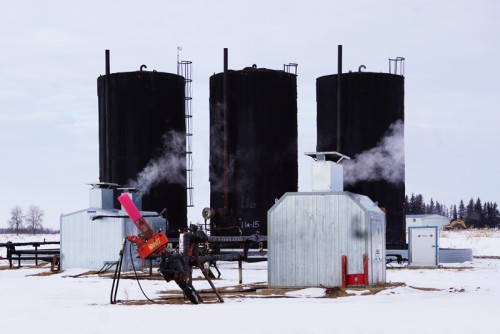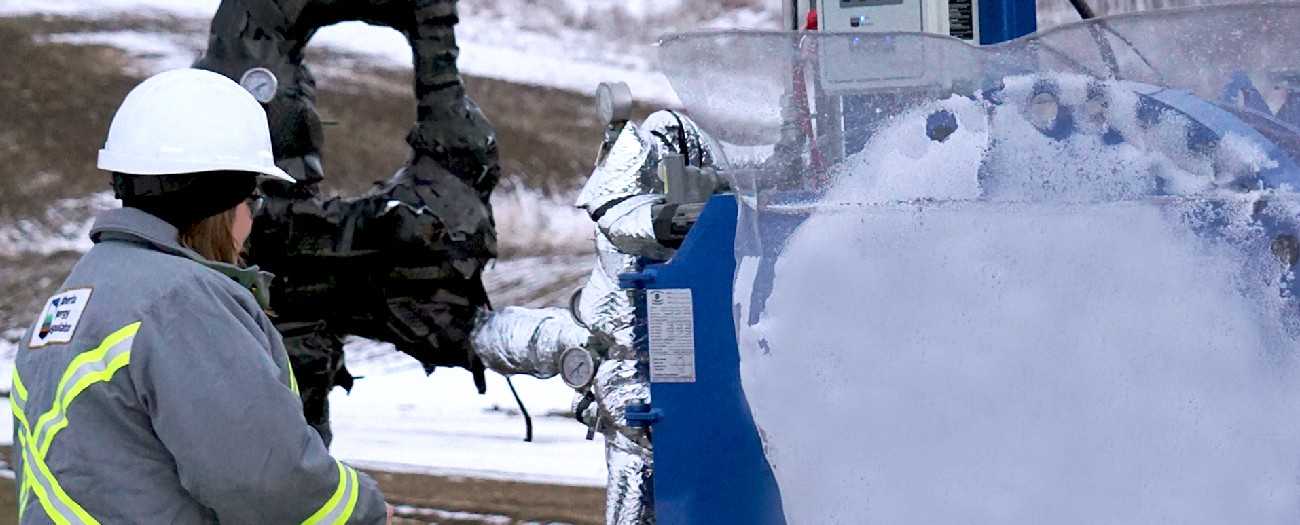How Alberta’s oil and gas industry copes with the cold
Alberta - February 11, 2018Jason Dahlgren, AER oil and gas operations technical specialist
The best defence is a good offence. The more prepared you are saves you a lot of headache in the long run,
How cold is too cold? If you’re an oil and gas company operating in the oil sands in Northern Alberta, the answer will disappoint you. Regardless of how low the mercury dips on the thermometer, operations need to keep running.

“Even if temperatures drop to extreme levels, it’s important to prevent damage. The only way to do that is to keep the equipment moving,” says Jason Dahlgren, oil and gas operations technical specialist with the Alberta Energy Regulator (AER).
Weathering the Storm
When faced with severe cold, oil and gas operators’ main concern is water. More specifically, when water freezes and expands, there’s a chance that pipes will burst or valves will break.
“Metal fatigue” is another danger at play. As the temperature drops, metal becomes weaker and more brittle, leaving it more susceptible to cracking.
Most operators can solve these problems by heating the pipes. Operators have a number of options for heating systems, like using steam and heated glycol (a chemical compound) pipes that run along the outside of the main pipes. The most widely used system is an electric “heat trace,” which is similar to a heated power cord that runs adjacent to the pipe.
For mining operations, it’s mostly good news when the cold weather hits. The mines pump the extracted ore through pipes mixed with water, so the freezing remains a problem. However, low temperatures also freeze the ground, which fills in holes and solidifies mud so that trucks don’t slip and get stuck.
The same goes for insitu operations, says Lawrence Jonker, an AER in situ and heavy oil technical specialist.
“Operators wait all year for the winter weather to arrive so they can build ice bridges through frozen terrain and muskeg,” he says. “This allows them to access oil sands resources in remote areas that typically would not be accessible during the warmer months.”
Jonker explains that it’s uneconomical and almost impossible to build these roads in the summer months.
Planning to Chill
The best way for companies to prevent problems during the cold months is to plan early. In fact, most operators start “winterizing” their sites in September. This work includes thoroughly auditing their equipment to see what is worn or damaged, and what needs to be replaced or repaired. By being proactive, operators say their equipment usually runs smoother in the winter as fewer problems occur.
It’s also important to plan for human hazards. Cold weather work requires special personal protective equipment such as winter weight overalls, ice grips for work boots, balaclavas, and insulated gloves. And workers should take scheduled breaks inside to warm up and monitor how long they’ve been exposed to the elements.
“The best defence is a good offence. The more prepared you are saves you a lot of headache in the long run,” adds Dahlgren. “There’s nothing you can do about the weather.”
Kate Bowering, Writer


